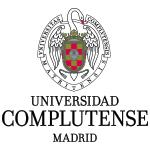Resistance mechanisms and farm-level distribution of fecal Escherichia coli isolates resistant to extended-spectrum cephalosporins in pigs in Spain
Research in Veterinary Science publica este artículo de investigación
1 de febrero de 2010
INTRODUCTION: Fecal Escherichia coli isolates showing a phenotype of reduced susceptibility or resistance to extended-spectrum cephalosporins are common among pigs in Spain. The aim of this study was to describe the main beta-lactam resistance mechanisms carried by these strains and their distribution at farm-level. MATERIALS AND METHODS: Twenty-nine E. coli isolates showing reduced susceptibility or resistance to extended-spectrum cephalosporins were collected from a sampling frame of 80 pig farms distributed over 13 Spanish provinces. The survey was carried out at the slaughterhouse level in 2004. RESULTS: Of the 29 isolates, 21 (72%) met the criteria for a positive phenotypic confirmatory test for extended-spectrum beta-lactamases (ESBL). The following ESBLs were detected: SHV-12 (12 isolates, 41%), CTX-M-1 (three isolates, 10%), CTX-M-9 (three isolates, 10%), and CTX-M-14 (three isolates, 10%). The remaining eight isolates (28%) were phenotypically non-ESBL, with seven of them (24%) showing mutations on the chromosomal ampC gene promoter at positions -42 (C-->T), -18 (G-->A), -1 (C-->T), and +58 (C-->T). A multiplex PCR for detection of plasmidic class C beta-lactamases was negative for all isolates. CONCLUSION: Different ESBLs and other mechanisms linked to extended-spectrum cephalosporin resistance are widely distributed among fecal E. coli from slaughter pigs in Spain
Escudero E., Vinue L., Teshager T., Torres C. y Moreno MA.
 | Servicio de Zoonosis de Transmisión Alimentaria y Resistencia a Antimicrobianos (ZTA). Centro de Vigilancia Sanitaria Veterinaria (VISAVET). Universidad Complutense (UCM). |
 | Departamento de Sanidad Animal. Facultad de Veterinaria. Universidad Complutense (UCM). |
 | Área de Bioquímica y Biología Molecular. Universidad de La Rioja (UR). |

